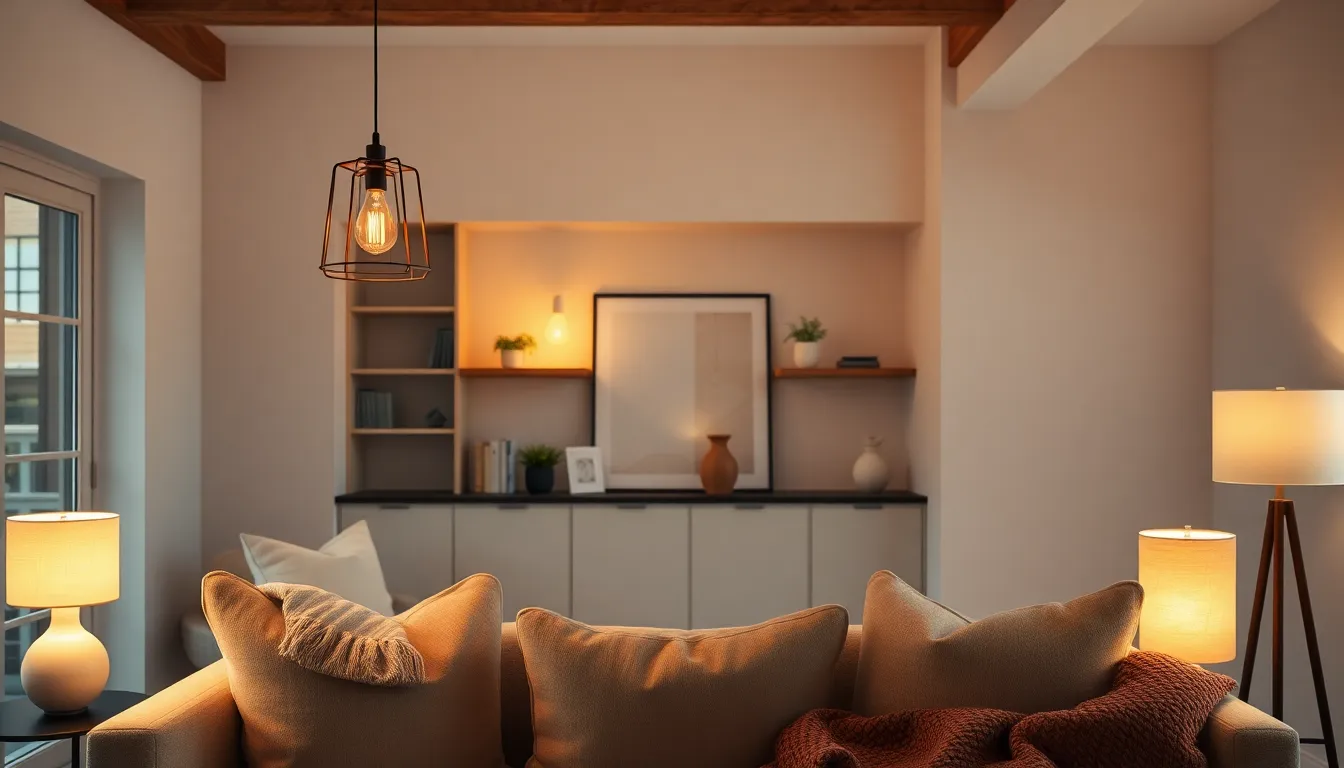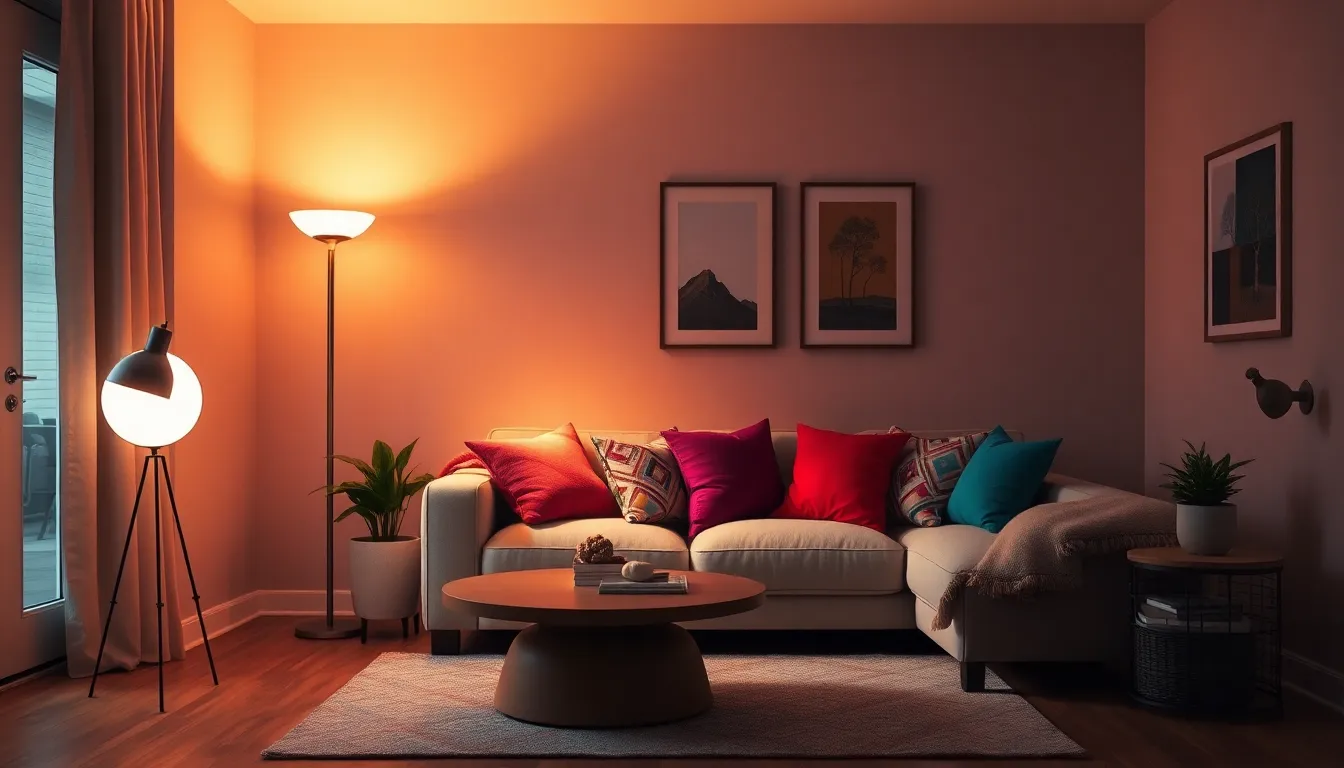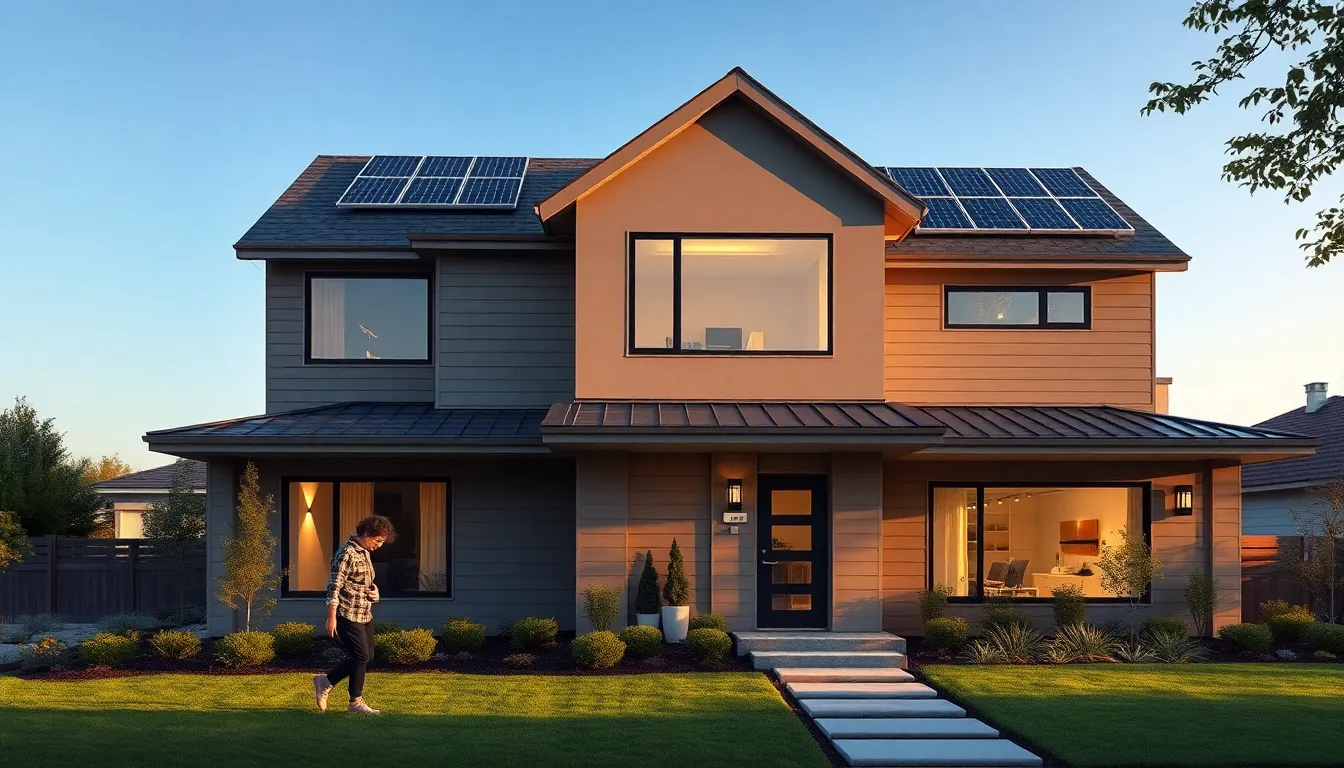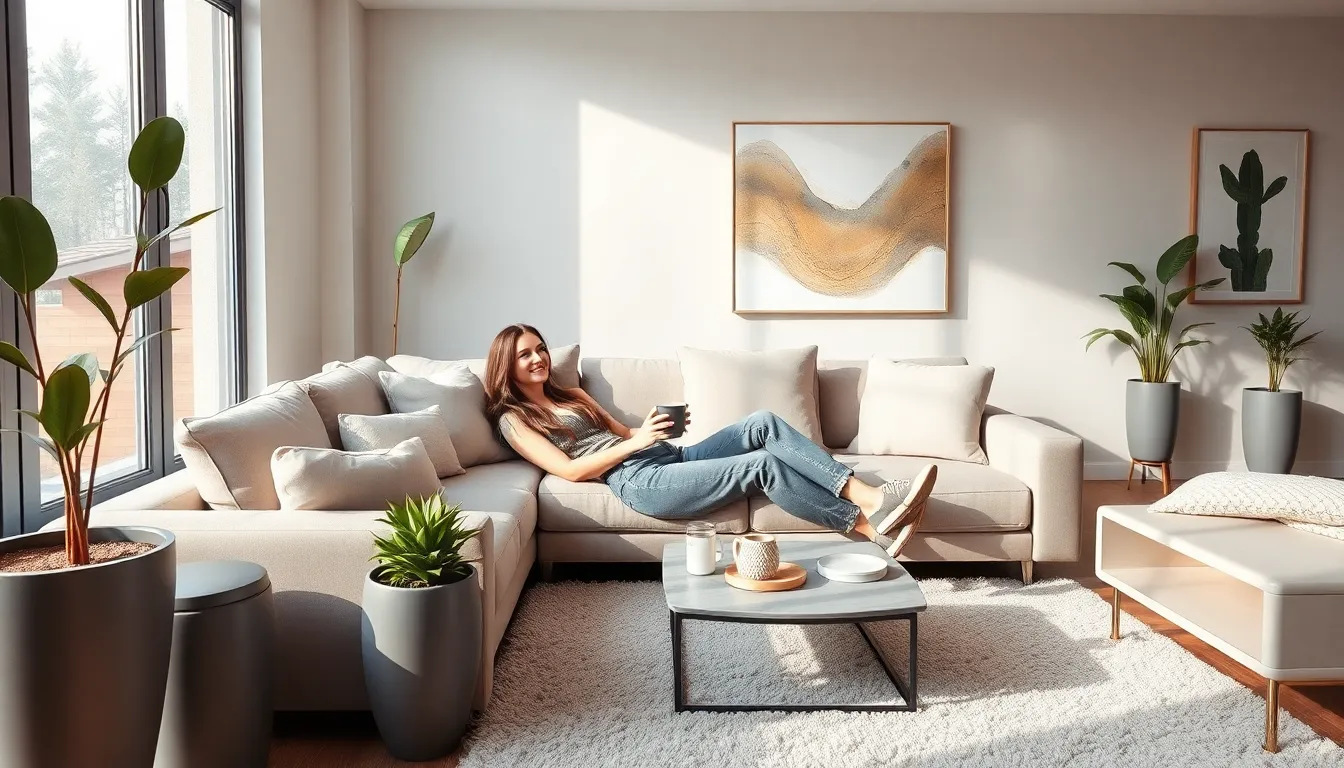Creating the perfect ambiance at home often hinges on one crucial element: lighting. Mood lighting transforms spaces, setting the tone for relaxation, productivity, or romance. Whether it’s a cozy nook for reading or a lively dining area for entertaining, the right lighting can elevate any room’s atmosphere.
Homeowners are increasingly turning to mood lighting solutions to enhance their living environments. From soft, warm hues to vibrant colors, the options are endless. With a few strategic choices, anyone can craft a personalized lighting scheme that reflects their style and needs. Embracing mood lighting not only beautifies a home but also enriches the overall experience of daily life.
Table of Contents
ToggleWhat Is Mood Lighting for Home?
Mood lighting refers to the intentional use of lighting to create specific atmospheres in residential spaces. It focuses on enhancing comfort, fostering relaxation, and influencing emotions through various lighting techniques and fixtures. Homeowners often utilize a mix of light sources, including ambient, task, and accent lighting, to achieve desired moods.
Types of Mood Lighting
- Soft Lighting: Soft lighting employs warm tones to create a cozy environment. It often utilizes lamps or dimmable bulbs to soften the overall illumination.
- Colored Lighting: Colored lighting uses different hues to evoke specific feelings. For example, blues or greens can promote calmness, while yellows and oranges can energize a space.
- Dimmed Lighting: Dimmed lights adjust brightness levels to suit activities like reading or entertaining. Smart bulbs facilitate easy customization of light intensity.
- Layered Lighting: Layered lighting combines multiple sources, such as ceiling fixtures, table lamps, and wall sconces, for a dynamic visual effect that adds depth to a room.
Benefits of Mood Lighting
- Enhanced Ambiance: Mood lighting improves the overall atmosphere of a room, making it feel inviting or intimate.
- Improved Focus: Properly designed lighting can enhance productivity in workspaces by providing adequate visibility without causing strain.
- Customized Experience: Homeowners can tailor lighting according to their preferences and activities, creating personal sanctuaries that resonate with individual styles.
By understanding mood lighting’s definition, types, and benefits, homeowners can make informed decisions to elevate their living spaces effectively.
Benefits of Mood Lighting for Home

Mood lighting significantly enhances the overall atmosphere of a home. It creates an inviting environment conducive to various activities and experiences.
Enhances Ambiance
Mood lighting adds depth and dimension to spaces, transforming plain areas into engaging environments. It allows homeowners to adjust lighting based on the time of day, personal preference, or occasion, such as soft warm lights for intimate dinners or bright lights for productivity. Each choice influences the ambiance, making it essential for homeowners to understand their lighting requirements. Various fixtures, including pendant lights, wall sconces, and table lamps, can contribute to a unified design that elevates the entire aesthetic of a room.
Affects Mood and Emotions
Mood lighting significantly impacts feelings by manipulating lighting levels and colors. Warm tones create feelings of comfort and security, while cooler tones can foster focus and clarity. For instance, soft white or yellow lighting promotes relaxation, ideal for bedrooms or lounges, whereas bright blue or green lights energize spaces, suited for home offices or workout areas. By taking advantage of varying light intensities and colors, homeowners create tailored environments that enhance well-being and productivity.
Types of Mood Lighting for Home
Mood lighting encompasses several types of illumination that enhance the environment. By incorporating ambient, task, and accent lighting, homeowners can create versatile spaces tailored to specific needs.
Ambient Lighting
Ambient lighting serves as the primary source of illumination, providing overall brightness in a room. Examples include ceiling-mounted fixtures, chandeliers, and LED lights. This type of lighting efficiently fills spaces with soft, uniform light, promoting a comfortable atmosphere. Dimmers often accompany ambient lighting for adjustability, allowing homeowners to shift the room’s mood from bright and lively to soft and intimate.
Task Lighting
Task lighting focuses on specific areas where activities occur, such as reading or cooking. Examples include desk lamps, under-cabinet lighting in kitchens, and adjustable floor lamps. This lighting type is typically brighter than ambient lighting, ensuring adequate visibility for tasks. Selecting fixture styles that match the room’s design while providing sufficient illumination enhances usability without compromising the overall aesthetic.
Accent Lighting
Accent lighting highlights particular features or objects within a space, such as artwork, architectural details, or plants. Examples include wall sconces, track lighting, and spotlights. This type of lighting adds depth and visual interest to a room, creating focal points that draw the eye. Homeowners often use accent lighting in combination with ambient or task lighting to achieve dimensionality and a well-rounded atmosphere.
How to Choose the Right Mood Lighting for Home
Selecting the right mood lighting enhances home atmosphere and functionality. Consider aspects such as space, light sources, and color temperature to create ideal settings.
Consider Your Space
Assess the size and layout of each room to determine appropriate lighting fixtures and placements. Small areas benefit from multi-functional fixtures that optimize illumination without overwhelming the space. Large rooms may require multiple light sources to maintain balance and avoid dark spots. Factor in existing furniture and decor, which influences the type of lighting needed. Identify the purpose of each room, as living rooms may require softer light for relaxation, while home offices benefit from brighter, focused lighting. Evaluate natural light availability to adjust artificial lighting choices appropriately.
Choose the Right Color Temperature
Select a color temperature that aligns with the desired mood of each room. Warm light (between 2700K and 3000K) creates a cozy, inviting ambiance ideal for bedrooms and living rooms. Cool light (above 4000K) enhances focus and productivity, making it suitable for workspaces and kitchens. Use adjustable lighting, such as smart bulbs, to switch between different color temperatures as needed. Consider layered lighting to mix various color temperatures, giving a dynamic feel to any space. Match the color temperature with the room’s purpose to truly reflect the desired emotional impact.
Mood lighting plays a crucial role in shaping the atmosphere of a home. By carefully selecting and layering different types of lighting, homeowners can create spaces that resonate with their personal style and emotional needs. Whether it’s a warm glow for relaxation or bright light for productivity, the right lighting can transform any area into a welcoming retreat.
Investing time in understanding the effects of various light sources can lead to a more enjoyable living experience. With the right approach, mood lighting not only enhances aesthetics but also contributes positively to overall well-being. Embracing these lighting techniques allows for a home that feels both functional and inviting, tailored to the unique lifestyle of its inhabitants.



